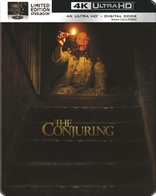Quote:
|
it's unnecessary, since you can just encode a signal like that as the video image. It's not done via interlacing, you just encode as 1080p/60
|
You've completely missed the point. Please re-read my post.
Your solution is not a mainstream solution in that it does not provide backwards compatibilty with legacy 2-D systems. The ONLY systems capable of playing your variety of 3-D encodings are specialty systems designed for just that task... or (ironically) with CRT-interlaced systems that have no deinterlacing processing in their signal path (something that cannot be said for virtually any HD display on the market to day). It's also one reason why that solution is only used for a handful of novelty discs on DVD and not for any serious wide-scale 3-D presentation of studio product.
A single disc solution that works for everyone, 2-D and 3-D viewer alike, and that provides full fidelity, is a solution that could actuall deliver 3-D content on a wide-scale. That's what I'm proposing and it's why I'm proposing it.
BTW, the BD format does not encompass 1080p60, much to my dismay. And you could not deliver 1080i60 (interlaced) encodings and acheive a working solution with any existing deinterlacing/decoding engine: that 480i60 trick with some 3-D DVDs only works on native 480i CRT displays that have no intermediary deinterlacing.
With a system that could package the two streams in the player in real-time as 1080p48, most decoders and displays would be "blind" to this progressive content and leave it unharmed. A sytem that depends on an interlaced signal won't work for today's progressive-displays. Note that shutter glasses are only one option for 3-D playback: the better method would be dual-projection using polorized filters and glasses like the typical IMAX 3-D presentation. With two 1080p projector costing under 5K in the next few years, that won't be an impossible goal even for a budget HT enthusiast who wants to collect 3-D movies.
One more point. Simultaneous decoding of dual streams is already accomplished with PIP. That's part of BD-J. Even full 1080p PIP with "swapping". Naturally, only players dedicated to the task of 3-D capability would need to decode the full 1080p for both streams at the same time anyway. Those players could charge a premium without a problem.
It would be nice if we could start conversations here at a level beyond the typical AVS-style banter where we waste energy going over obvious ground that shouldn't need covering.
























 Linear Mode
Linear Mode

